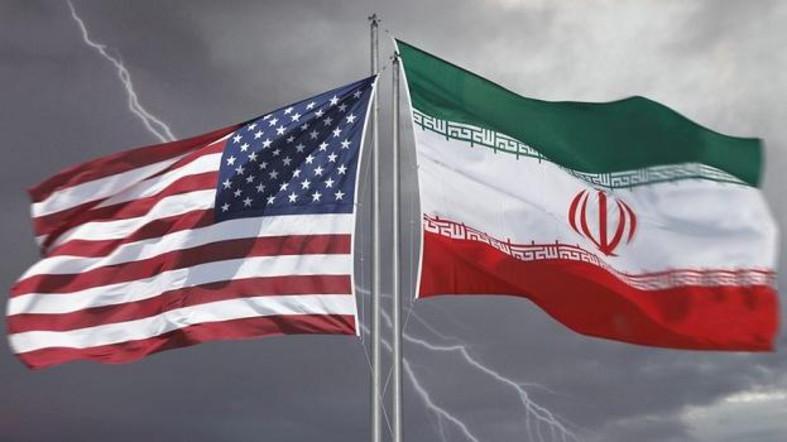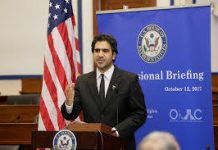How Trump Can Get a Better Deal on Iran
مايكل سنك من الورن بولسي: كيف بإمكان ترامب أن يحصل على اتفاق افضل مع إيران
Michael Singh/Foreign Policy/The Washington Institute./October 11/2018
The United States needs to keep Europe on board, go beyond sanctions, and ensure lasting bipartisan support for its new policy.
Apparently, one of the top leaders of a “corrupt dictatorship” responsible for sowing “chaos, death, and destruction” can also be an “absolutely lovely man.” At least U.S. President Donald Trump seems to think so, having uttered all of these words in reference to President Hassan Rouhani’s Iran in the course of a single day at last month’s United Nations General Assembly in New York.
This pairing of criticism and compliments is a paradox with a purpose. Trump is not content with having discarded the Iran nuclear deal inked in 2015 by his predecessor; he wants to negotiate a better one. And in echoes of his policy toward North Korea, he intends to squeeze Iran as hard as possible until it agrees to come to the table.
It is a simple strategy, but not without significant risks. The clearest is that rather than or prior to knuckling under, Iran will escalate by ramping up its nuclear activities and provoking a crisis. Taking a page from North Korea’s playbook, Tehran may calculate that the United States will feel pressure to pay simply for a return to the status quo ante.
A less alarming but perhaps likelier risk is that Tehran will simply hold out, seeking merely to endure for a time rather than bargaining to relieve crushing economic pressure, as authoritarian regimes from Venezuela to Iraq have done in the past.
If it takes this route, Iran will likely be counting on three things working in its favor: that the United States will be isolated internationally, that the Trump administration’s approach will prove polarizing domestically and will be discarded by his successor, and that Washington will be unwilling to go beyond sanctions to challenge Iran across the region.
If the Trump administration wants to maximize pressure on Iran, it must frustrate Tehran’s expectations on all three fronts while dissuading it from expanding its nuclear pursuits. Doing this will require a strategy that is at once multilateral—a comprehensive plan supported by U.S. allies that goes beyond sanctions to utilize all policy tools available including diplomatic, intelligence, and military means—and sustainable, garnering sufficient bipartisan domestic support to seem likely to outlast Trump’s tenure in office.
The first step in such a strategy must be to heal the rift between the United States and its allies—particularly France, Germany, and the United Kingdom, which negotiated the nuclear deal alongside Washington. Despite their discord over the U.S. withdrawal from the deal and Washington’s reimposition of sanctions, the United States and its allies in Europe and elsewhere agree more than they disagree on Iran. None wishes to see Iran develop a nuclear weapon, and all are alarmed by the country’s development and proliferation of missiles and other weapons and fielding of proxy forces throughout the Middle East.
Given this overlap, negotiating a modus vivendi between the United States and Europe should be achievable. The Trump administration should show modest flexibility in its application of sanctions, and the European Union should join the United States in imposing costs on Iran targeting areas of mutual concern such as Iran’s missile program and activities in Syria.
Some will complain about any compromise regarding U.S. unilateral measures, but such objections are misguided. The United States and its allies standing together would deprive Iran of strategic advantage and more than offset any marginal decrease in U.S. pressure. And flexibility on the implementation of new sanctions could enable European powers to dissuade Iran from ramping up its nuclear activities and give them space to cajole Iran back to negotiations over the list of concerns the United States and its allies share.
But a common U.S.-European diplomatic front will not be enough. Faced with economic pressure, Iran—as we have already seen in Iraq—may respond on the ground in areas where it supports proxies and where it perceives a comparative advantage over Western states that are weary of the Middle East. It may also question whether Trump, who has been harshly critical of past U.S. interventions in the region, would respond resolutely to an Iranian nuclear breakout, whereby it seeks to rapidly build a nuclear weapon.
Countering Iran in the region need not, and indeed should not, be strictly a military activity. Indeed, any Iran policy has to account for the reality that Washington’s top priorities increasingly lie outside the Middle East. But the application of limited force—retaining the small U.S. troop presence in Syria or expanding allied efforts to interdict Iranian arms shipments—can amplify the effect of diplomacy. That diplomacy should aim both to resolve conflicts like Yemen’s, which Iran has exploited to expand its regional influence, and, just as critically, to deny Tehran new opportunities for meddling that arise from squabbling among U.S. allies or internal tensions within regional states.
Finally, the Trump administration must secure bipartisan support for its strategy toward Iran. Republicans should understand that dissuading Iran from pursuing the actions enumerated by Secretary of State Mike Pompeo is likely to be a long-term endeavor. Democrats should recognize that merely stepping back into the nuclear deal, should they win back the White House, may not be so easy—especially as the agreement’s restrictions approach their expiration dates—and that they will in any event require a strategy for addressing the nonnuclear challenges Iran poses.
The increasing volatility of U.S. foreign policy on critical issues such as Iran not only encourages allies and adversaries alike to hold out for a more favorable future policy, but also diminishes Washington’s ability to lead. Both parties must assume responsibility for reversing this trend.
At the moment, the Trump administration appears isolated on Iran. But in reality, the concerns it has articulated regarding Iranian policies are widely shared in the United States and abroad, and U.S. allies are eager for American leadership on thorny regional issues such as Syria and Yemen.
Trump may never get his made-for-TV moment with an Iranian leader. But if he can rally his allies rather than alienate them, and if his offer to Tehran of a diplomatic offramp is genuine, he can ensure that Iran pays a price for challenging U.S. interests—and perhaps even coax it back to the negotiating table.
*Michael Singh is the Lane-Swig Senior Fellow and managing director at The Washington Institute.





















